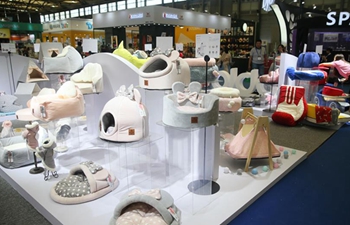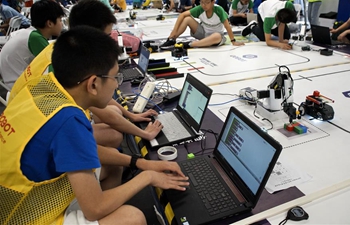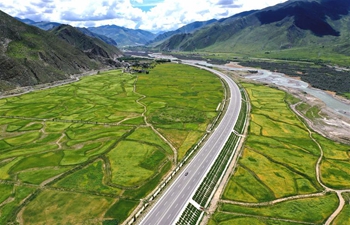GENEVA, Aug. 22 (Xinhua) -- Microplastics in the water we drink don't pose health risks for now, the World Health Organization (WHO) said Thursday.
"Based on the limited information we have, microplastics in drinking water don't appear to pose a health risk at current levels. But we need to find out more. We also need to stop the rise in plastic pollution worldwide," said Dr. Maria Neira, director of WHO's Department of Public Health, Environment and Social Determinants of Health.
"We urgently need to know more about the health impact of microplastics because they are everywhere," she said.
On average, people could be ingesting approximately 5 grams of plastic every week, which is the equivalent weight of a credit card, according to a study published in May this year by the University of Newcastle, Australia.
The study suggested that people are consuming about 2,000 tiny pieces of plastic every week. That's approximately 21 grams a month, just over 250 grams a year.
"These findings must serve as a wake-up call to governments. Not only are plastics polluting our oceans and waterways and killing marine life - it's in all of us and we can't escape consuming plastics," said Marco Lambertini, director general of World Wide Fund for Nature (WWF) International, said.
Based on a separate study conducted by the State University of New York in March last year, more than 90 percent of bottled water are contaminated with microplastic particles.
In the report, analysis of 259 bottles from 19 locations in nine countries across 11 different brands found an average of 325 plastic particles for every liter of water being sold.
These tiny particles can originate from a variety of sources, including artificial clothes fibers, microbeads found in some toothpastes, or bigger pieces of plastic which gradually break into smaller pieces when they're thrown away and exposed to the elements.
They make their way into our rivers and oceans, and can be eaten by fish and other marine animals, ending up as part of the food chain.
WHO recommends drinking-water suppliers and regulators prioritize removing microbial pathogens and chemicals that are known risks to human health, such as those causing deadly diarrhoeal diseases.
"Global action is urgent and essential to tackling this crisis," Lambertini said.

















